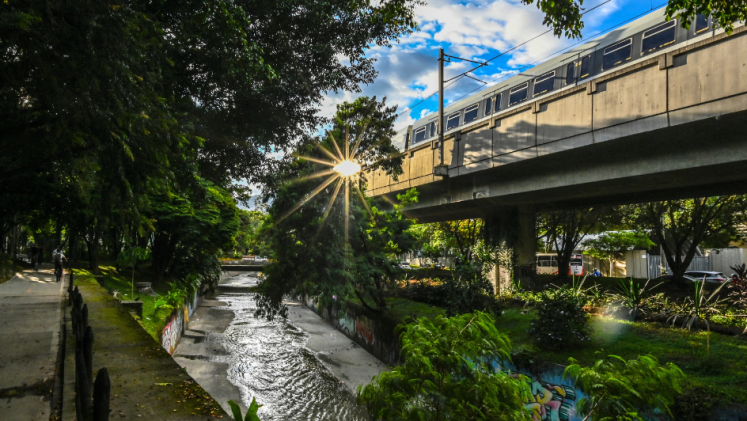By 2050, more than two thirds of the world population are projected to live in urban areas, and most of this urban growth will take place in lower and lower-middle income countries. But densely built-up urban spaces tend to come with challenges of their own. Therefore, there is a need to start ensuring today that these urban areas will be inclusive, safe, sustainable and resilient.
But what does that mean? UNU-EHS Senior Scientist Simone Sandholz names five promising aspects how cities with their growing populations could develop to become more sustainable and resilient.
Urban transport systems need to become more sustainable
Sustainable urban transport can include giving priority to bicycles over cars as done for example in Copenhagen where a bridge exclusively for bikes has been constructed, by introducing bus rapid transit (BRT) with dedicated bus routes like in Johannesburg, or cable cars as part of urban public transport systems to link hilly and often low-income urban communities to the city like in Medellin or La Paz.
Nature-based solutions work for cities, too
Increasingly nature-based solutions are considered in urban climate change adaptation and disaster risk reduction. An example would be New York City’s greened rooftops and streets that can better manage storm water runoff and improve urban climate. China introduced the concept of ‘sponge cities’, cities with open spaces that can soak up floodwater and prevent disaster in ecologically friendly ways. A growing number of tools are supporting cities throughout the implementation phase, for example this one developed by UNU-EHS scientists.
Community networks can support urban disaster resilience
Impacts from disasters such as floods or storms are often worst in densely populated urban areas. While the role of proper building codes and land-use planning has been recognized in reducing disaster risks for a long time, increasingly social ties and community networks are on the agenda. When developing solutions for how to support the elderly during heatwaves, for example, finding help in the community is equally important to beneficial infrastructure.
Smart solutions can improve urban livelihoods
For poor urban dwellers access to even basic urban services can be a challenge. If you live in an informal settlement and you do not have a proper address and a bank account, it is often difficult to sign up for basic necessities such as water and energy services. Digital technologies such as mobile money can change that. In Kenya, smart metering enables payment for utilities and transportation by means of mobile money, thereby providing more equal access. Furthermore, the mobile money services facilitate transfers between urban and rural areas and are particularly helpful for female-headed households.
Cities, countries and international bodies need to collaborate
Urban sustainable development needs to be a top priority not only in cities but beyond urban boundaries. For this purpose Brazil enacted a City Statute and implemented a Ministry of Cities in 2003 to direct urban planning and to make it more sustainable and inclusive. Countries are also coming together on an international level, for example at the United Nations Conference on Housing and Sustainable Urban Development (Habitat III) in which 167 counties participated to focus on sustainable urban development and adopted the “New Urban Agenda”. While good ideas are getting implemented in different cities around the world, it is this kind of collaboration that can make a difference globally.


